|
|
|
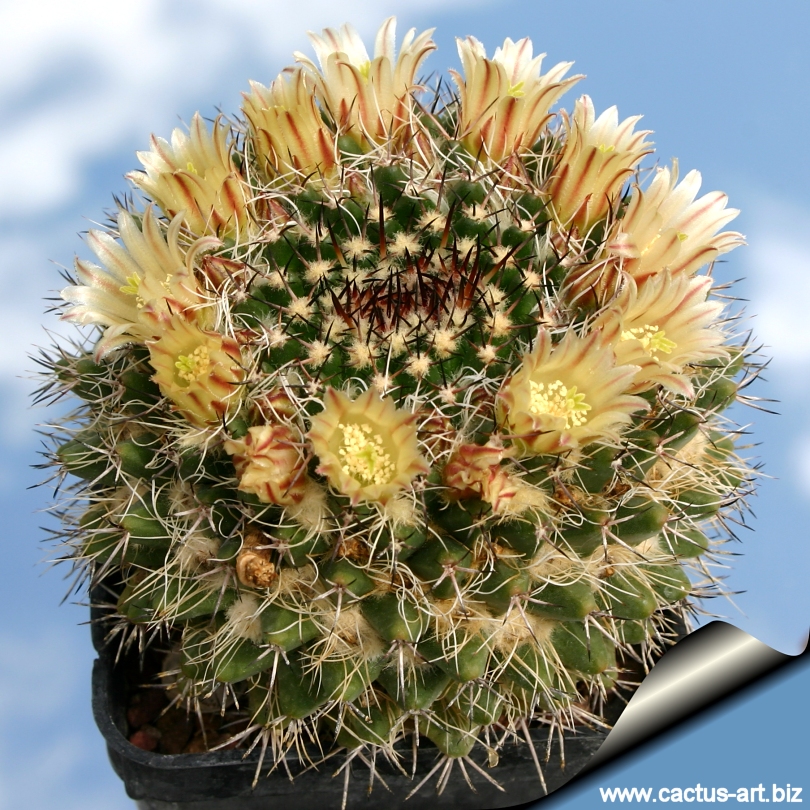
Mammillaria karwinskiana
ML352
10km from Teotlan del Valle, on the
road to Antonio Cuajimoloyas, Oaxaca
|
|
Description: Solitary, or slowly branching dichotomously (or
basally), with cream coloured 'snowy'
tomentum on the top of the plant.
Stem: Globose to short cylindrical, blue-green to dark green, up to
12 cm in diameter, 8-20 cm tall. With
latex.
Axil: Very woolly, with tufts of white hair and long white
bristles.
Tubercles: Firm, pyramidal, arranged spirally with 13-21
parastichys
Radial spine: Usually 6, awl-like, straight to slightly curved,
cream to reddish tipped with brown, becoming chalky white with age, 4 -
30 mm long, upper and lower ones longest.
Central spine: Absent
Flower: Funnel-form, cream-white to yellow with purplish mid-veins,
up to 25 mm long and 15 mm in diameter.
Blooms adorn the crown of the plant,
usually in a ring, in the growth of the previous year.
Flowering time: Early spring.
Fruit: Red, elongated, and quite attractive.
M. karwinskiana is
a very variable species, and some of the different growing forms have
for a long time been considered separate and distinguished varieties,
for example:
-
ssp. karwinskiana has medium yellow flowers with purplish
mid-veins; No central spines and 6 radial spines.
- ssp. collinsii has white flowers
with deep pink mid-veins; One central spine and 7 radial spines.
- ssp. beiselii has white flowers
with red tinted mid-veins; One central spine and 5-8 radial spines.
-
ssp. nejapensis also has white flowers with red tinted
mid-veins, but the spines are larger and white and have much more wool;
No central spines and 3-5 radial spines per areole.
|
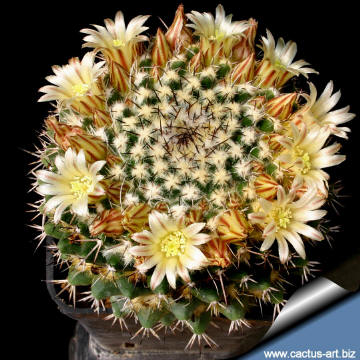 |
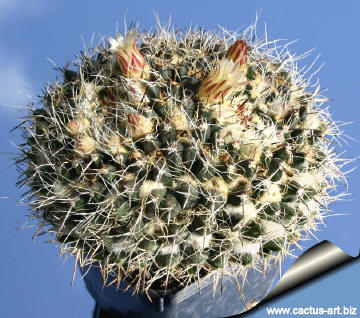
It is a solitary cactus, that sometime branches
dichotomously. It has characteristic cream coloured 'snowy' wool
and bristles on the top. |
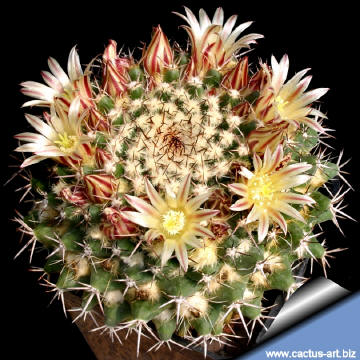 |
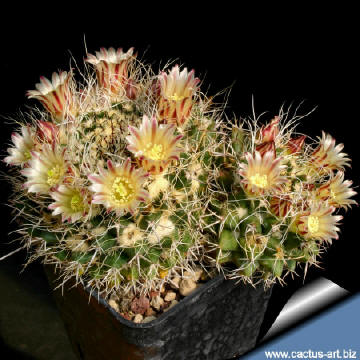 |
|
|
|


Advertising
|
|
|
|
|
Family:
Cactaceae
(Cactus
Family)
Scientific name: Mammillaria karwinskiana
First description by Martius, Nov. Act. Nat. Cur.
16(1): 335 (1832)
Origin: Mexico Oaxaca, (Morelos, Michoacan, Puebla). Altitude
1.200 - 2.100 m.
Conservation status: Listed in
CITES appendix 2.
Synonyms:
- Neomammillaria karwinskiana
(Mart.) Britton & Rose
- Mammillaria pyrrhocephala,
- Mammillaria multiseta,
- Mammillaria strobilina,
- Neomammillaria praelii,
- Cactus praelii,
- Mammillaria viridis var. praelii,
- Mammillaria praelii,
- Neomammillaria neomystax,
- Mammillaria neomystax,
- Mammillaria nagliana,
- Mammillaria fischeri,
- Mammillaria ebenacantha,
- Mammillaria conzattii,
- Mammillaria pyrrhocephala var. confusa,
- Neomammillaria confusa,
- Mammillaria confusa,
- Cactus karwinskianus,
- Mammillaria tropica,
- Neomammillaria karwinskiana,
- Mammillaria jozef-bergeri
|
|
|
|
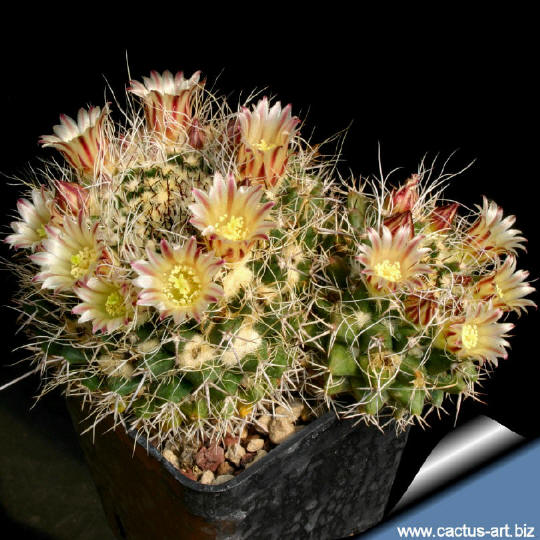
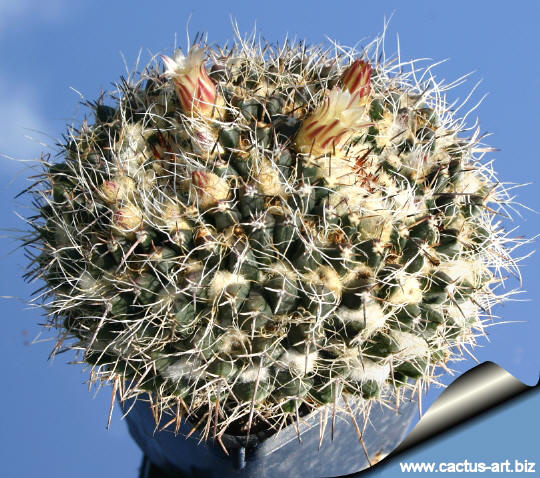
This is one of the Mammillaria commonly called "Owl Eye
Cactus", known for
dichotomous branching (forking or dividing into two parts). Although
dichotomous branching is not a common occurrence in cacti in general, it
happens for some reason in this particular subspecies. What
is interesting about this cactus is that it began as a single head, and
it has now divided twice, forming what will be four separate branches.
When the division process started, it was obvious that four heads would
appear, but I don’t think the one head divided quadruply. Most probably,
one head became two, and then those two immediately divided.
Other Owl Eye Cactus among others comprise:
M. microthele,
M. formosa,
M. tlalocii and
M. perbella. Cultivation: They are
easy to cultivate, and make interesting specimens for any collection.
Over time they will produce large clumps. It grows by dichotomously
dividing, and also by producing offsets and doesn't require any
special treatment, but needs as much light as possible without burning
the plant, to keep the stems compact. It needs a well-drained soil
mix. Water well and then allow to dry thoroughly before watering
again, during the growing season. It doesn't like much, if any, winter
water, and can survive short exposures to freezing temperatures (-4°
C.) if properly hardened off and kept dry.
Propagation: Mammillaria karwinskiana is best propagated from seed.
Seed
readily germinates at 20°-22°C, or by offsets if available.
|
|